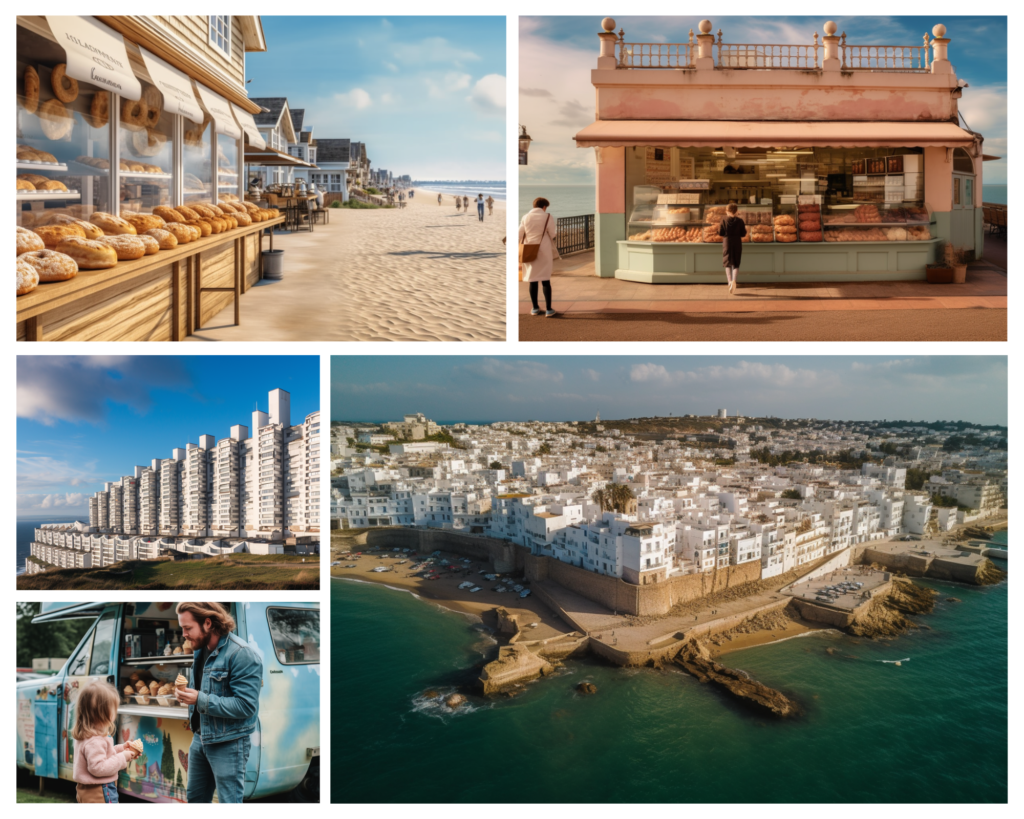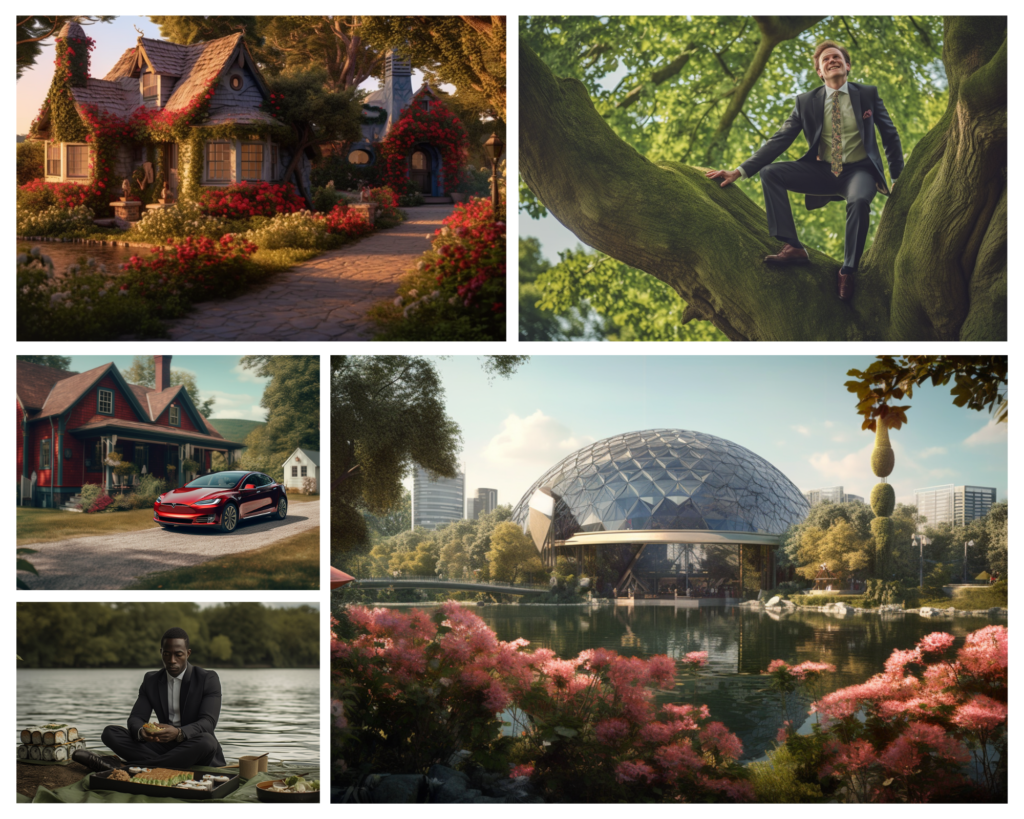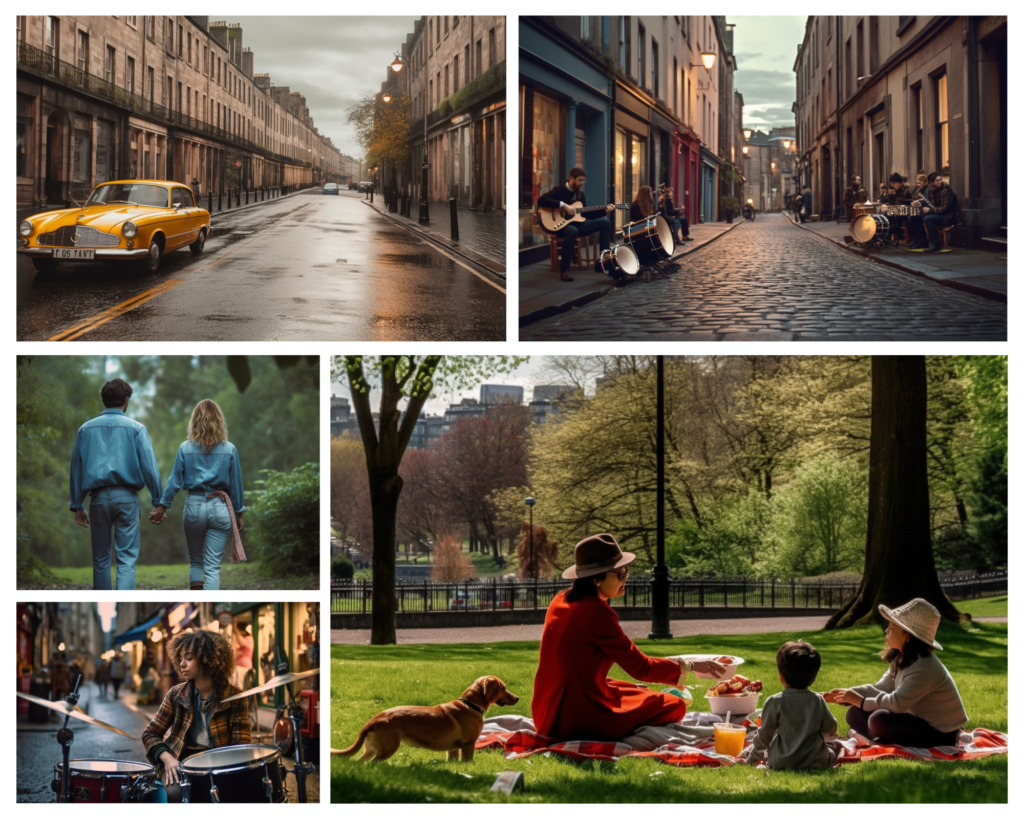It goes without saying that children often have vivid imaginations. Imaginations that let them see the world in a different, more colourful and exciting way.
A cardboard box can be a rocket up to space and a blanket draped over two chairs can become a medieval castle guarded by dragons.
As adults, we often miss out on this imagination as unfortunately, we know that cotton candy lands don’t exist.
So, to bring some colour to our lives, we decided to bring some children’s imaginations to life.
Ahead of the summer holidays, we asked children what they thought about different holiday destinations around the UK and used AI to bring these perceptions to life – from a next-door-neighbour Yeti to the constant aroma of freshly baked bread.
Check out the results below and indulge yourself in the creative spark of children and let yourself be transported to a world created with the vivid hues of their creativity.
Lake District
A UNESCO World Heritage site, the Lake District is nestled in the northwest of England with rolling hills, looming mountains, and tranquil lakes. The area is a popular holiday destination and its landscapes have captured people’s hearts for centuries. It has long inspired poets, writers, and artists including the likes of William Wordsworth and Beatrix Potter.
And what about when it comes to children’s imaginations? When we asked some children about the Lake District, they said:
“It’s big and has a lake in it with forests and paths. Houses look like fairy or hobbit houses, even like Hagrid’s house. The colours in the Lake District are lots of greens, blues, and reds. It smells like roses because there are lots of rose bushes there. People wear suits and ties, and they work in a big glass dome as architects. They drive Tesla for sustainability and eat a lot of Japanese food. For fun, they play in the forest and climb trees.”
Snowdonia
Snowdonia is a mountainous region in the heart of Wales. Named after its highest peak, Mount Snowdon, the national park boasts a rugged and diverse landscape that stretches over 800 miles. Its impressive national beauty has allured people to visit its impressive mountain ranges, tranquil valleys, and meandering rivers for many years.
When we asked some children about how they would describe Snowdonia, they said:
“There is loads of snow. The houses are igloos and you might see a Yeti. Everyone wears massive coats and drives tractors. They play snowball fights for fun. The colours in Snowdonia are white and green It smells like campfires.”
Cornwall
With its rugged cliffs, golden sandy beaches, and turquoise waters, Cornwall stands as a captivating coastal gem on the southwestern tip of England. From the iconic St. Michael’s Mount to the dramatic cliffs of Land’s End, the region captivates a range of senses with its tapestry of sights and sounds and has long enticed people to visit.
And what do children imagine the sights and sounds of Cornwall to be? When we asked some children about the region, they said:
“It has very tall buildings and most of the buildings are white. People live in apartments and hotels and they all have new cars. Everyone wears jeans and lots of them are bakers. It smells like buns and cakes because there are lots of bakeries. Some people are designers and some are shop workers. For fun, they play football and eat pizza.”

Edinburgh
Edinburgh and its enchanting streets are steeped in history, culture, and creativity. From the imposing Edinburgh Castle to the elegant Georgian buildings of the New Town, the city was named the world’s first UNESCO City of Literature as a result of the esteemed writers that it has inspired including Sir Walter Scott and Robert Louis Stevenson.
And when it comes to imagination, we asked some children about their perception of Edinburgh and they said:
“It has lots of very old buildings. There are lots of parks and people have lots of picnics with their dogs. People were jeans and eat croissants and hot dogs. The cars are yellow and old-fashioned. Lots of people play music in the streets, even the drums. There is a giant dog statue too.”
Methodology
We spoke to a handful of Key Stage 2 children (aged between 7 to 11) and asked them their perceptions of each holiday destination. We asked them a range of questions including what each place looks like, smells like, and what the people who live there are like.
We then combined these perspectives to get an overall picture of each destination and used AI to bring these to life.



